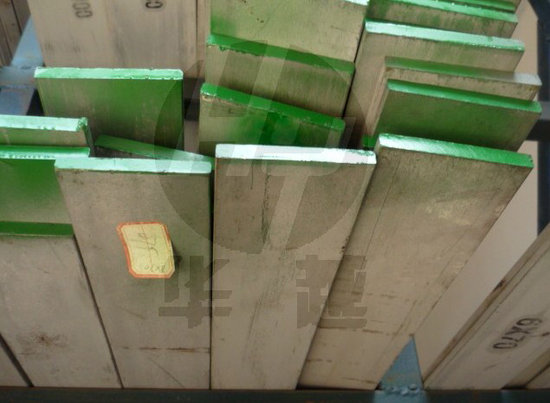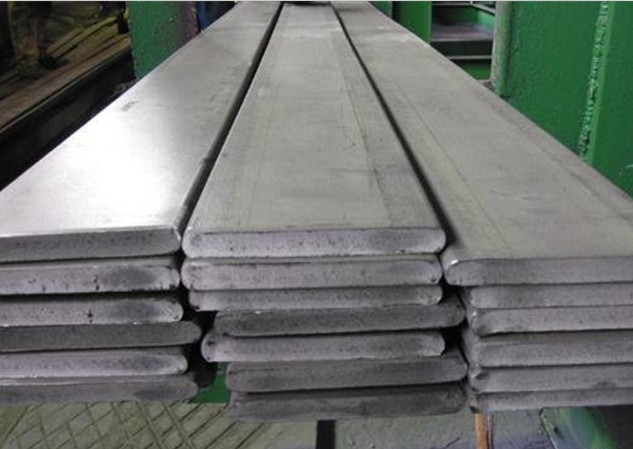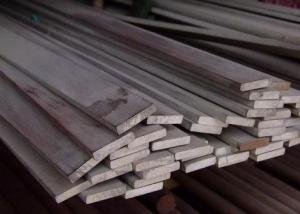304 Stainless Steel Flat
- Loading Port:
- China Main Port
- Payment Terms:
- TT or LC
- Min Order Qty:
- 5 Tons m.t.
- Supply Capability:
- 1000 Tons Per Month m.t./month
OKorder Service Pledge
OKorder Financial Service
You Might Also Like
Stainless Steel Flats
1. Standard: AISI, GB, JIS, ASTM, DIN, EN
2. Grade: 1).200Series: 201,202.
2).300Series: 301,302,303,304,304L,316,316L,321.
3).400Series: 410,410S,416,420,430,430F.
3. Size:3x25mm- 80x250mm
4. Length: 2m-6m
5. Craft: HRAP, or cold drawn
6. Stainless Steel Flat Bar Surface: Pickling or polished
7. MOQ: 1 Ton
8. Delivery: within 20 days
9. Package: Waterproof with tape
10. Application: These products are widely supplied to areas of machine-made industry, chemical industry, shipping industry,architecture, food industry, household products etc.
|
Size |
Thickness (mm) | |||||||||||
|
Width (mm) |
3 |
4 |
5 |
6 |
8 |
10 |
12 |
14 |
16 |
20 |
25 |
30 |
|
Theoretical Weight (kg/m) | ||||||||||||
|
10 |
0.238 |
0.32 |
0.4 |
0.48 |
0.63 |
|
|
|
|
|
|
|
|
15 |
0.36 |
0.48 |
0.59 |
0.71 |
0.95 |
1.19 |
|
|
|
|
|
|
|
20 |
0.476 |
0.63 |
0.79 |
0.95 |
1.27 |
1.59 |
1.9 |
|
|
|
|
|
|
25 |
0.585 |
0.79 |
0.99 |
1.19 |
1.59 |
1.98 |
2.38 |
|
|
|
|
|
|
30 |
0.714 |
0.95 |
1.19 |
1.43 |
1.9 |
2.38 |
2.85 |
3.33 |
3.81 |
4.75 |
5.948 |
|
|
40 |
0.952 |
1.27 |
1.59 |
1.9 |
2.54 |
3.17 |
3.81 |
4.44 |
5.08 |
6.34 |
7.93 |
9.52 |
|
50 |
1.19 |
1.59 |
1.98 |
2.38 |
3.17 |
3.97 |
4.76 |
5.55 |
6.34 |
7.93 |
9.91 |
11.9 |
|
60 |
1.428 |
1.9 |
2.38 |
2.85 |
3.81 |
4.76 |
5.71 |
6.66 |
7.61 |
9.52 |
11.9 |
14.27 |
|
70 |
|
2.22 |
2.78 |
3.33 |
4.44 |
5.55 |
6.66 |
7.77 |
8.88 |
11.1 |
13.88 |
16.65 |
|
80 |
|
|
3.17 |
3.81 |
5.08 |
6.34 |
7.61 |
8.88 |
10.15 |
12.69 |
15.86 |
19.03 |
|
90 |
|
|
3.57 |
4.28 |
5.71 |
7.14 |
8.56 |
9.99 |
11.42 |
14.27 |
17.84 |
21.41 |
|
100 |
|
|
3.97 |
4.76 |
6.34 |
7.93 |
9.52 |
11.1 |
12.69 |
15.86 |
19.82 |
23.79 |
|
110 |
|
|
|
5.23 |
6.98 |
8.72 |
10.47 |
12.21 |
13.96 |
17.45 |
21.81 |
26.17 |
|
120 |
|
|
|
5.71 |
7.61 |
9.52 |
11.42 |
13.32 |
15.23 |
19.03 |
23.79 |
28.55 |
|
130 |
|
|
|
6.19 |
8.25 |
10.31 |
12.37 |
14.43 |
16.49 |
20.62 |
25.77 |
30.93 |
|
140 |
|
|
|
6.66 |
8.88 |
11.1 |
13.32 |
15.54 |
17.76 |
22.2 |
27.76 |
33.31 |
|
150 |
|
|
|
7.14 |
9.52 |
11.9 |
14.27 |
16.65 |
19.03 |
23.79 |
29.74 |
35.69 |
|
160 |
|
|
|
7.61 |
|
12.69 |
15.23 |
17.76 |
20.3 |
25.38 |
31.72 |
38.06 |
|
170 |
|
|
|
|
|
13.48 |
16.18 |
18.87 |
21.57 |
26.96 |
33.7 |
40.44 |
|
180 |
|
|
|
|
|
14.27 |
17.13 |
19.98 |
22.84 |
28.55 |
35.69 |
42.82 |


- Q:How do you prevent freezing in stainless steel pipes?
- One way to prevent freezing in stainless steel pipes is by insulating them with high-quality pipe insulation. This insulation helps maintain the temperature of the pipes and prevents heat loss, thus reducing the risk of freezing. Additionally, ensuring proper ventilation in areas where the pipes are located can also help prevent freezing by allowing warm air to circulate around the pipes.
- Q:What is the tensile strength of stainless steel pipes?
- The tensile strength of stainless steel pipes can vary based on the specific grade and composition of the steel. However, stainless steel is renowned for its high tensile strength, making it a popular choice for various applications that demand sturdy and long-lasting pipes. On average, stainless steel pipes possess a tensile strength that falls within the range of 500 to 1500 megapascals (MPa). Thanks to this remarkable tensile strength, stainless steel pipes can endure substantial pressure and stress, rendering them suitable for utilization in industries like construction, oil and gas, chemical processing, and automotive manufacturing. It is worth noting that the precise tensile strength of stainless steel pipes can be influenced by factors such as the manufacturing process, heat treatment, and any additional alloying elements present in the steel. Consequently, referring to the specific technical specifications or standards for the particular grade of stainless steel pipes is crucial in order to ascertain their exact tensile strength.
- Q:What is the difference between seamless and submerged arc welded stainless steel pipes?
- The main difference between seamless and submerged arc welded stainless steel pipes lies in the manufacturing process. Seamless stainless steel pipes are produced without any welding seam, resulting in a smoother and more uniform surface. On the other hand, submerged arc welded stainless steel pipes are created by welding strips of stainless steel using an electric arc submerged in a flux. This process may leave a visible welding seam on the surface. Overall, seamless pipes offer better corrosion resistance and higher strength, while submerged arc welded pipes are typically more cost-effective and suitable for applications with lower pressure requirements.
- Q:Can stainless steel pipes be used for pulp and paper industry applications?
- Yes, stainless steel pipes can be used for pulp and paper industry applications. Stainless steel is highly resistant to corrosion and can withstand high temperatures and pressures, making it suitable for various processes in the pulp and paper industry, such as chemical pulping, bleaching, and paper drying. Additionally, stainless steel pipes offer excellent durability, hygiene, and longevity, making them an ideal choice for this industry.
- Q:Are stainless steel pipes resistant to corrosion?
- Yes, stainless steel pipes are highly resistant to corrosion. This is due to the presence of chromium in stainless steel, which forms a passive layer on the surface of the pipe. This passive layer acts as a protective barrier, preventing the metal underneath from coming into contact with corrosive substances. The chromium content in stainless steel is typically at least 10.5%, which is higher than other types of steel, and this helps to enhance its corrosion resistance. Stainless steel pipes are widely used in various industries such as construction, oil and gas, and automotive, where corrosion resistance is essential to ensure the longevity and integrity of the pipes.
- Q:How do stainless steel pipes compare to fiberglass-reinforced pipes?
- Both stainless steel pipes and fiberglass-reinforced pipes are popular options for a range of uses. However, they possess distinct qualities that differentiate them from each other. To begin with, stainless steel pipes are renowned for their exceptional durability and strength. They can endure high pressure, temperature, and corrosion, making them suitable for industrial and heavy-duty applications such as oil and gas, chemical processing, and plumbing systems. Additionally, stainless steel pipes are non-combustible and have a lengthy lifespan, reducing the need for frequent replacements. In contrast, fiberglass-reinforced pipes (FRP) offer unique advantages in specific circumstances. FRP pipes are lightweight and possess excellent chemical resistance, making them ideal for use in corrosive environments like wastewater treatment plants, desalination facilities, and chemical processing plants. Moreover, FRP pipes outperform stainless steel pipes in terms of insulation properties, which can be advantageous in situations requiring thermal insulation. In terms of cost, stainless steel pipes generally carry a higher price tag compared to fiberglass-reinforced pipes. However, it is crucial to consider the project's specific requirements and the expected lifespan of the pipes when assessing overall cost-effectiveness. Ultimately, the choice between stainless steel pipes and fiberglass-reinforced pipes hinges on the particular needs of the application. If durability, strength, and resistance to high pressure and temperature are the primary considerations, stainless steel pipes are the preferred option. Conversely, if factors such as weight, corrosion resistance, and insulation properties take precedence, fiberglass-reinforced pipes may prove to be the superior choice.
- Q:Stainless steel pipe pickling ratio
- Features: sticky green and blue transparent paste, dirt removal ability, fast and convenient, especially suitable for large workpieces, equipment, partial or overall treatment, not suitable for liquid immersion, better than the market similar products.
- Q:Are stainless steel pipes suitable for mining operations?
- Yes, stainless steel pipes are suitable for mining operations. Stainless steel is highly durable and resistant to corrosion, making it an ideal choice for use in the mining industry. The mining environment often involves exposure to harsh chemicals, high temperature, and abrasive materials, all of which can cause regular pipes to deteriorate quickly. However, stainless steel pipes are known for their excellent corrosion resistance, ensuring that they can withstand the challenging conditions present in mining operations. Additionally, stainless steel pipes have high tensile strength, which allows them to endure the stress and pressure that can occur during the mining process. Moreover, stainless steel pipes are easy to clean, which is crucial in mining operations to prevent contamination and maintain the efficiency of the system. Overall, stainless steel pipes provide a reliable and long-lasting solution for mining operations, making them highly suitable for this industry.
- Q:Can stainless steel pipes be used for mining and mineral processing applications?
- Mining and mineral processing applications can utilize stainless steel pipes. The exceptional corrosion resistance of stainless steel makes it ideal for use in environments with exposure to chemicals, acids, and high temperatures commonly found in these operations. Stainless steel pipes provide several benefits in these applications. Firstly, their corrosion resistance ensures they can withstand harsh conditions, reducing the risk of pipe failure, and minimizing maintenance and replacement costs. Additionally, stainless steel pipes are highly durable and have a long lifespan, making them cost-effective in the long term. Moreover, stainless steel pipes are non-reactive and do not contaminate the materials they transport, which is crucial for maintaining product purity in mining and mineral processing. This makes them suitable for conveying various minerals, ores, and chemicals without compromising quality or causing contamination issues. Another advantage of stainless steel pipes is their versatility. They can be manufactured in different sizes, shapes, and thicknesses to meet specific requirements in mining and mineral processing. Additionally, stainless steel pipes can be easily connected to other components and systems through welding, threading, or coupling, allowing for efficient installation and integration into existing infrastructure. In conclusion, stainless steel pipes are an excellent choice for mining and mineral processing applications due to their corrosion resistance, durability, non-reactivity, and versatility. They provide a reliable and cost-effective solution for conveying various materials in demanding environments while maintaining the integrity and purity of processed products.
- Q:What is the difference between bright annealed and annealed pickled stainless steel pipes?
- Bright annealed and annealed pickled stainless steel pipes differ in their surface finish and treatment processes. Bright annealed stainless steel pipes undergo a heat treatment known as annealing in a controlled atmosphere to eliminate internal stresses and improve the material's ductility. This process also results in a bright and shiny surface finish, making the pipes suitable for applications that require an aesthetically pleasing appearance, such as decorative or architectural purposes. On the other hand, annealed pickled stainless steel pipes undergo a two-step treatment process. First, the pipes are annealed to remove any stresses and improve their mechanical properties. Then, they undergo a pickling process where the surface is chemically treated to remove scale, oxides, and other impurities. This treatment leaves the pipes with a dull and rough surface finish, which is often desired for applications that require subsequent coatings, such as painting or galvanizing. In summary, the main difference between bright annealed and annealed pickled stainless steel pipes lies in their surface finish. Bright annealed pipes have a bright and shiny appearance, while annealed pickled pipes have a dull and rough surface finish due to the pickling process. The choice between the two types depends on the specific requirements of the intended application.
1. Manufacturer Overview |
|
|---|---|
| Location | Jiangsu,China |
| Year Established | 2002 |
| Annual Output Value | Above US$ 8 Million |
| Main Markets | China, East Asia, |
| Company Certifications | ISO9001:2000; |
2. Manufacturer Certificates |
|
|---|---|
| a) Certification Name | |
| Range | |
| Reference | |
| Validity Period | |
3. Manufacturer Capability |
|
|---|---|
| a)Trade Capacity | |
| Nearest Port | Shanghai |
| Export Percentage | 40% |
| No.of Employees in Trade Department | 30 People |
| Language Spoken: | English;Chinese |
| b)Factory Information | |
| Factory Size: | Above 26,000 square meters |
| No. of Production Lines | Above 6 |
| Contract Manufacturing | OEM Service Offered;Design Service Offered |
| Product Price Range | Average |
Send your message to us
304 Stainless Steel Flat
- Loading Port:
- China Main Port
- Payment Terms:
- TT or LC
- Min Order Qty:
- 5 Tons m.t.
- Supply Capability:
- 1000 Tons Per Month m.t./month
OKorder Service Pledge
OKorder Financial Service
Similar products
New products
Hot products
Hot Searches
Related keywords





























